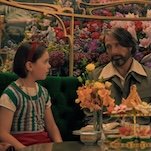The Total War series has always been excellent in both conception and execution, with a handful of apparently tiny but certainly annoying flaws preventing them from reaching their full potential. The most impressive elements of Shogun 2 aren’t its fantastic graphics or its skillful evocation of Japanese history—they’re the collection of tweaks that Creative Assembly has successfully used to smooth over the series’ consistent issues while maintaining the core appeal.
Some of these are major and noticeable: the strategic AI has been vastly improved, to the point where it can provide a constant threat to the player. The battle AI seems better, but even if it’s still weak, a multiplayer “drop-in” button allows you to search for a human opponent for less predictable results. Battles end faster, with an overall army morale causing quicker routs. There’s less focus on dull sieges, as their shorter length encourages sorties from the defenders, while well-designed fortresses encourage attackers to make direct assaults. Fewer slots for development in provinces keep the player making interesting choices, instead of merely picking the most powerful option, while build times and balance prevent strong factions from expanding too quickly and “steamrolling” their opposition. In one deft swoop, Creative Assembly eliminated the series’ biggest weaknesses while emphasizing the strengths.
Shogun 2’s only major flaws are outside the game. Shogun 2 is much less friendly to modders than the series has been in the past; the hardware requirements (and consequent loading times) seem a little bit high; and occasionally drop-in battles are hard to find. Yet, within the game, Shogun 2 serves as the culmination of all of the Total War series’ good ideas through the years. It’s the ideal example of evolution trumping revolution in creating great video games.








































